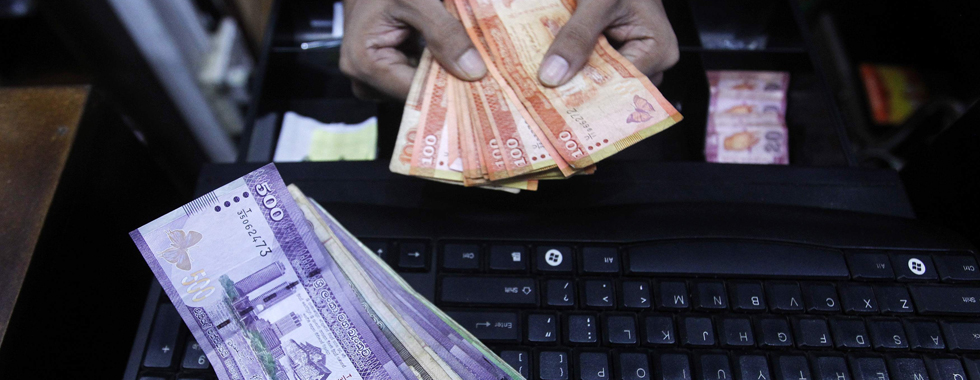US dollar gains against Lankan Rupee are likely temporary : SCB report
View(s):The recent USD-LKR (Sri Lanka Rupee) gains are temporary and the market is expected to return to the broad downtrend in place since mid-2012, according to the Standard Chartered Bank (SCB)
In its ‘Asia Focus’ report the bank said the USD-LKR up-move has been led by higher import demand rather than substantial bond outflows, as has been the case in most emerging markets. “In our view, Sri Lanka’s muted economic recovery precludes the possibility of a substantial acceleration in import growth, as witnessed in early 2012. As such, we expect lower imports and continued strength in remittances and tourism earnings to narrow the current account deficit to 4.5 per cent of GDP in 2013 from 6.6 per cent in 2012. This should keep the USD-LKR under pressure, though periodic up-moves due to the global risks related to export growth and portfolio flows are likely,” it said.

A vendor prepares notes to bundle them at a shop in Colombo. REUTERS
The dollar rose to Rs. 131 on June 27 (Thursday), its’ highest in seven months, and fell back to Rs. 130 on Friday.
The report said Sri Lanka’s macroeconomic environment remains stable, and “we see no pressing need to adjust the policy levers at present”.
With domestic macro conditions expected to become more supportive as 2013 progresses, the mood is one of cautious optimism. Inflation continues to moderate, while growth remains stable. “We maintain our 2013 GDP growth forecast of 6.5 per cent, but with risks to the downside due to the slower-than-expected export recovery in H1-2013,” it said.
Although domestic and global supply conditions are expected to improve, inflation remains elevated and is still a risk, owing to domestic factors. The expected moderation in headline inflation in the past two quarters is largely due to base effects and improvements in domestic supply; however, the electricity- and fuel-price hikes implemented in April and adverse weather conditions could put upward pressure on inflation in the coming months.
“We expect inflation to spike in Q4-2013 due to a pick-up in domestic demand and private-sector investment resulting from policy easing and lower interest rates. We believe the central bank will maintain its status quo on policy rates and keep the repo rate at 7 per cent until at least Q1-2014,” it said.
The government, the report noted, expects lower import expenditure across all categories – consumer, investment and intermediate goods including crude oil – and continued strength in remittances and tourism earnings in H2-2013 to narrow the current account deficit further in 2013 to 4.5 per cent of GDP. Oil-price stability should also help reduce the losses of state-owned enterprises (SOEs).
“We see the shortfall in tax revenue as a key risk to macro stability. The pick-up in domestic activity expected for the remainder of this year is likely to generate higher tax revenue; however, our GDP growth forecast of 6.5 per cent (compared with the central bank’s 7.5 per cent target) suggests that tax revenue (budgeted at 19.2 per cent of GDP to achieve the fiscal deficit target of 5.8 per cent of GDP) may fall short. Fiscal consolidation should help moderate inflation; however, deficit reduction is contingent on restraining expenditure growth to offset weak tax revenue,” the report added.
Follow @timesonlinelk
comments powered by Disqus


